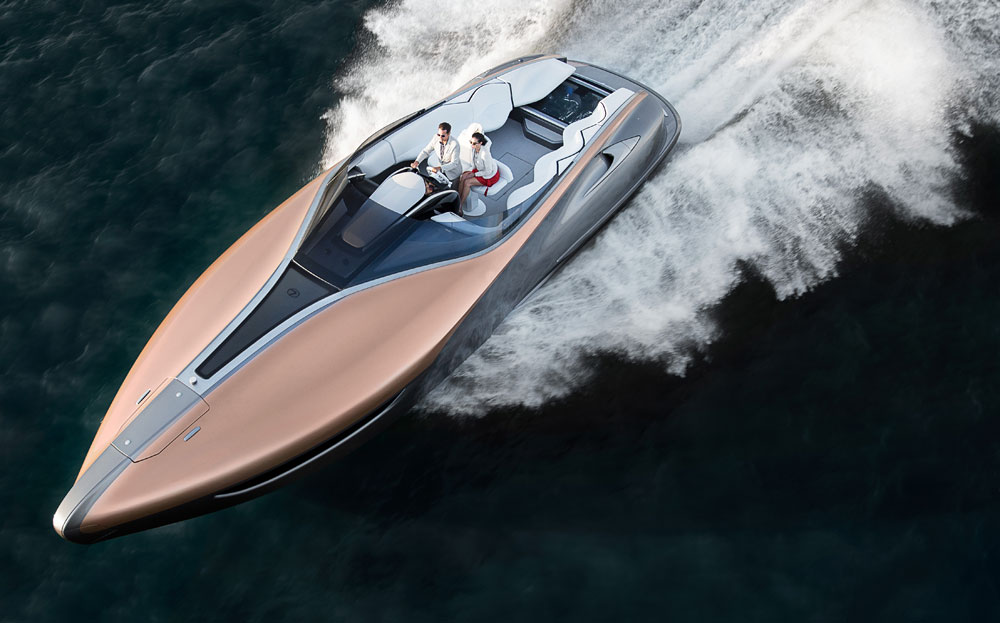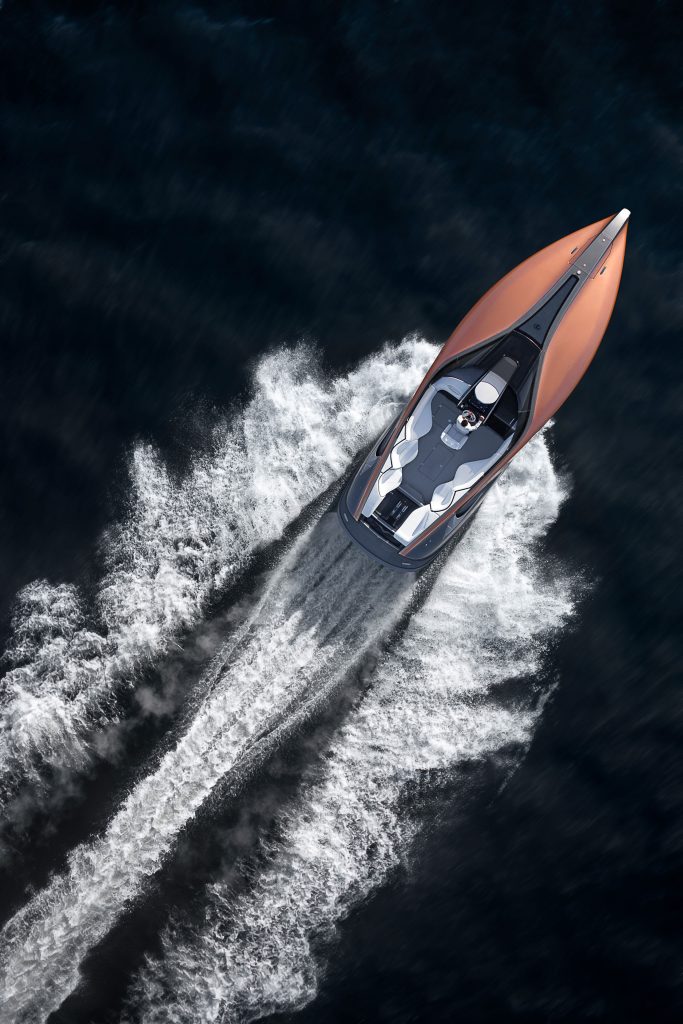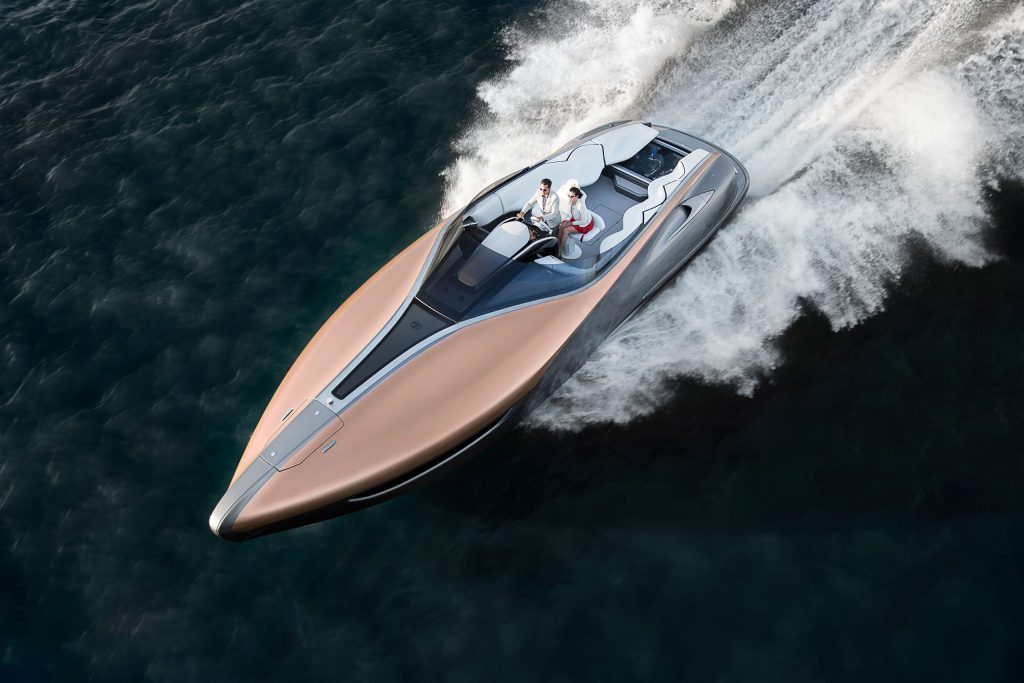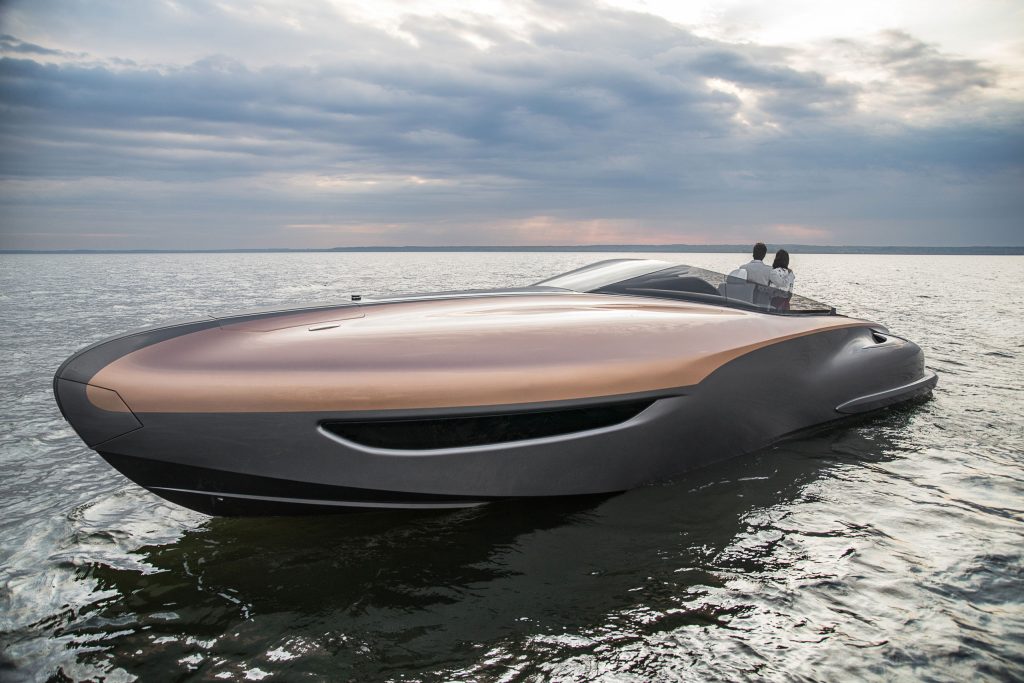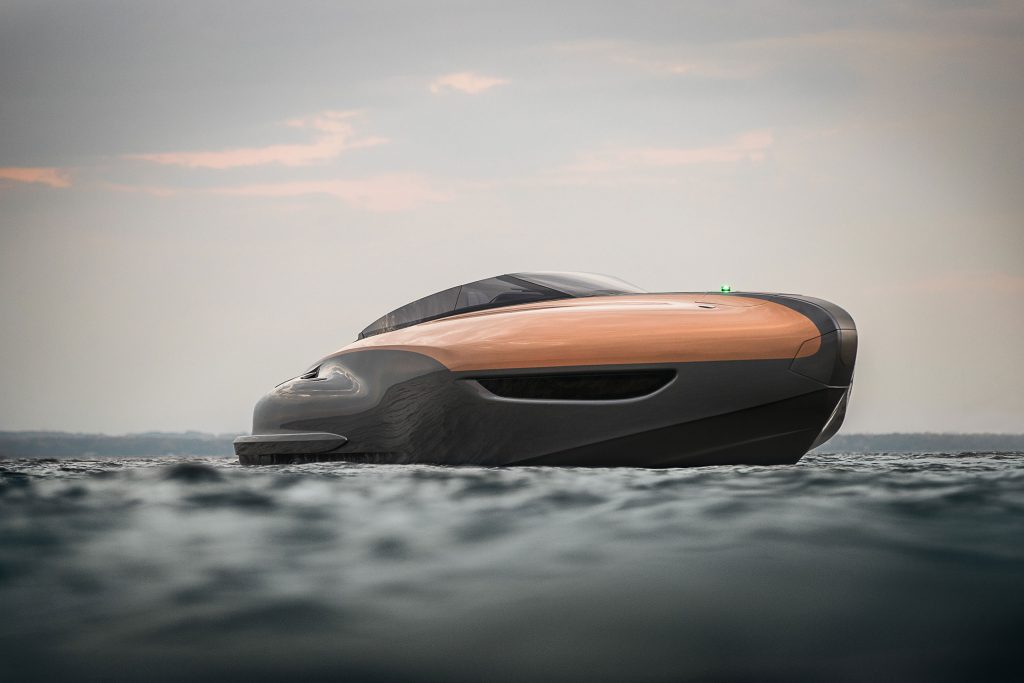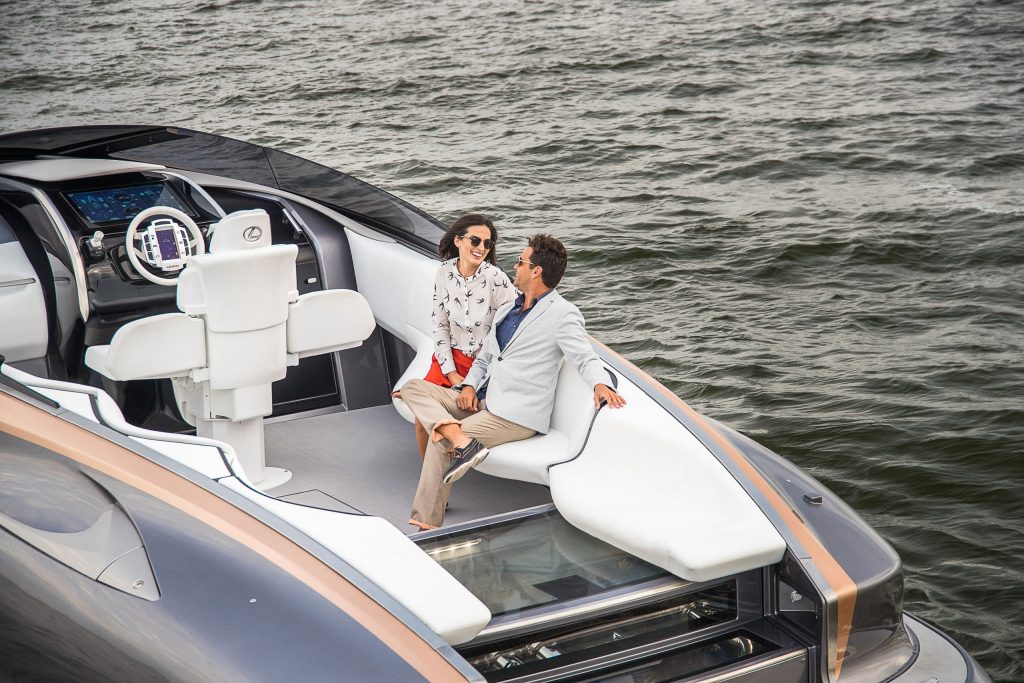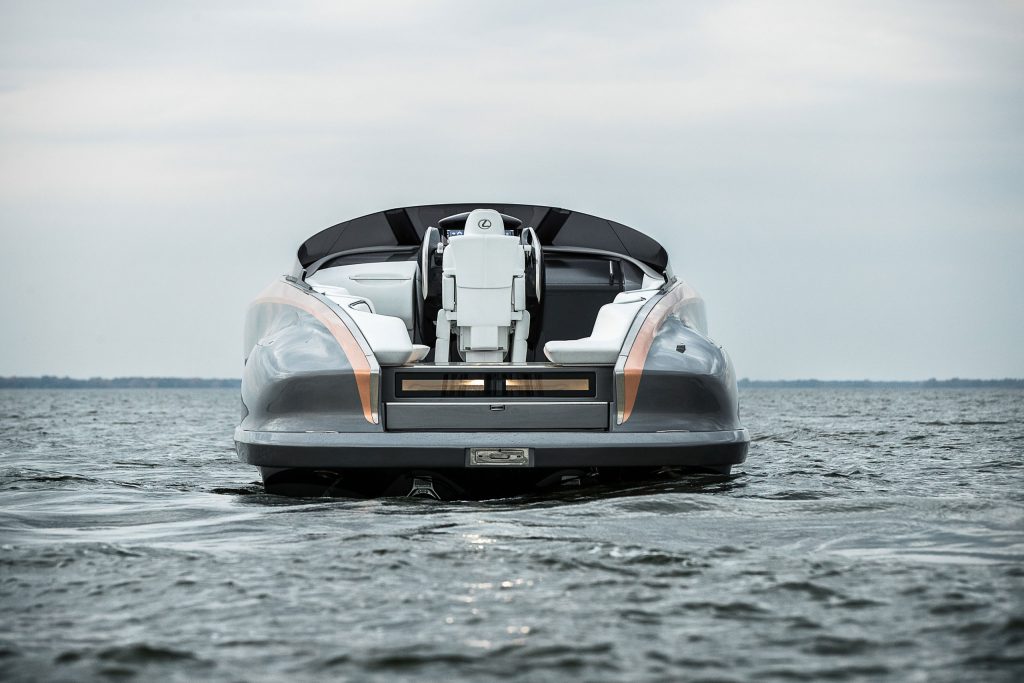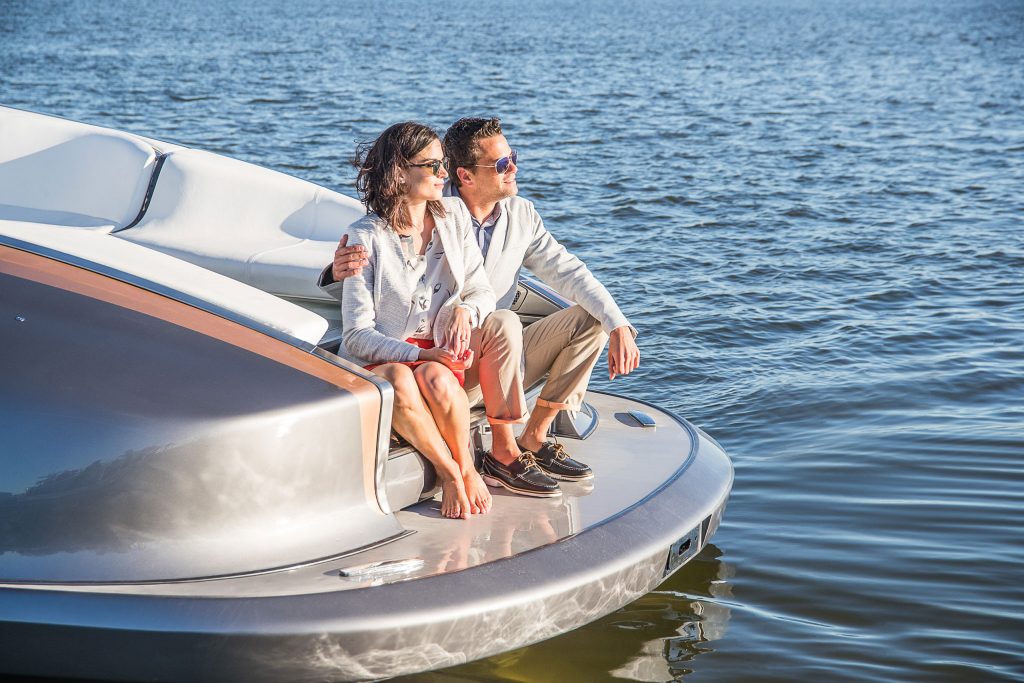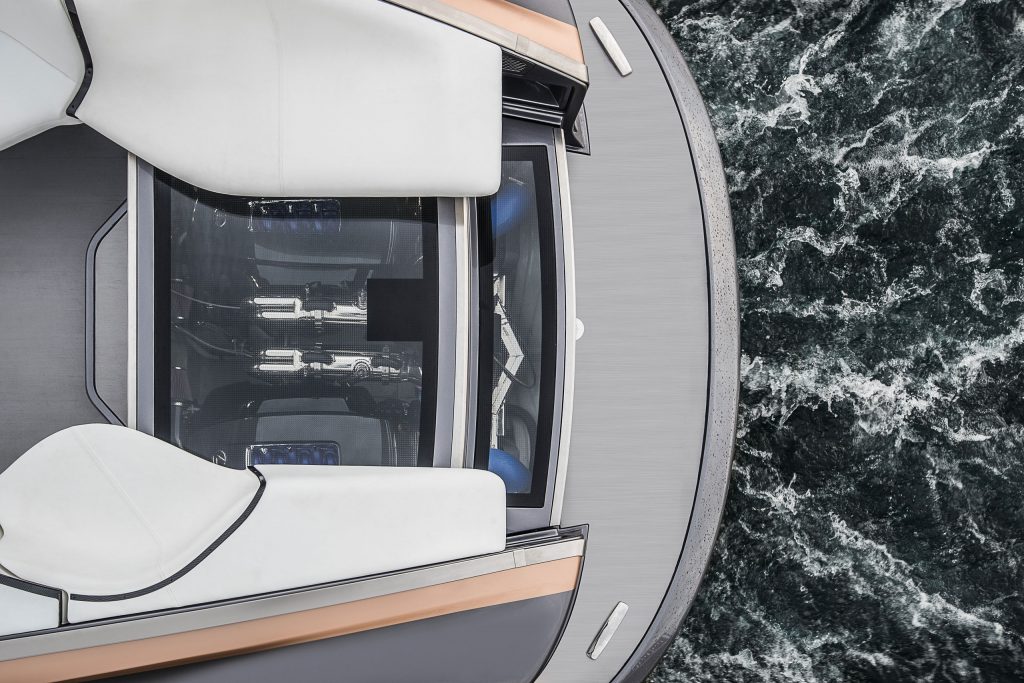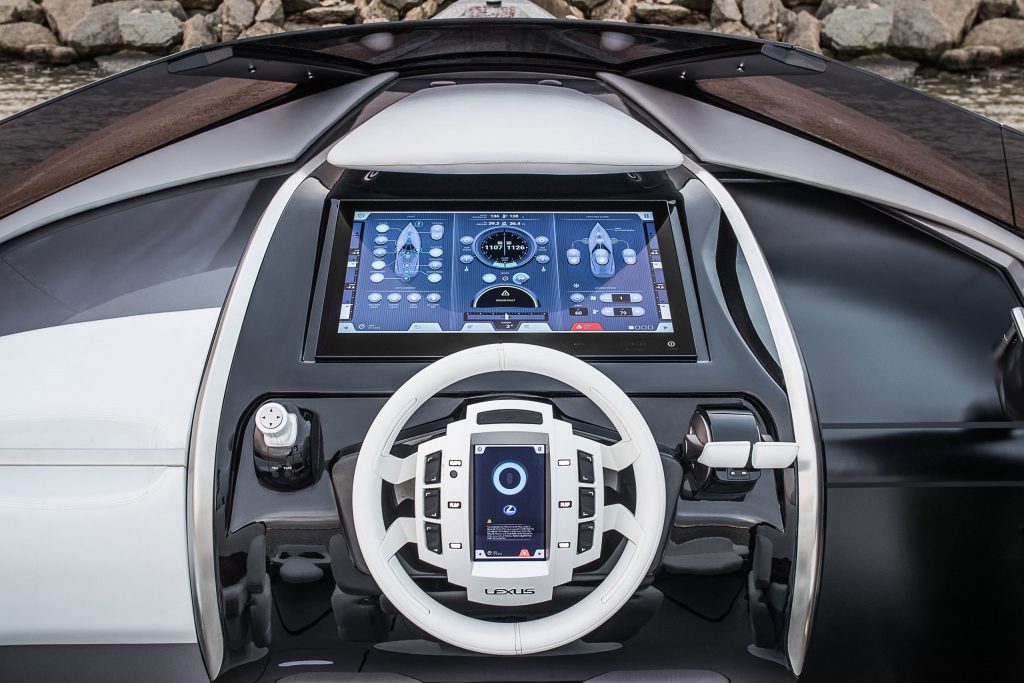Lexus has revealed the Sport Yacht Concept today in Miami Beach, a bespoke one-off project that explores “how Lexus design language could be applied to a maritime lifestyle”.
Designed in collaboration with the Toyota Marine Department & the Marquis-Carver Yacht Group, the Sport Yacht Concept is a functioning proof-of-concept powered by two 5.0L V8 engines and constructed using carbon-fiber reinforced plastic, or CFRP.
Lexus Enthusiast is in Miami, and will bringing live coverage of the yacht debut and other Lexus brand activities throughout the day — be sure to follow us on Instagram, Facebook, & Twitter for the latest updates.
In the meantime, here’s the full Sport Yacht Concept press release, complete with video and a full photo gallery.
Origin
A few years ago the Toyota Marine Department invited Toyota Motor Corporation president Akio Toyoda to spend several days on the water driving their new Ponam range of premium yachts soon to be launched in Japan.
As a master driver, Toyoda was inspired by the power of the turbodiesel powertrains and the handling and stability of the advanced hull designs; as the Chief Branding Officer of Lexus International, he also appreciated the potential of a stylish premium performance yacht to complement the Lexus lifestyle.
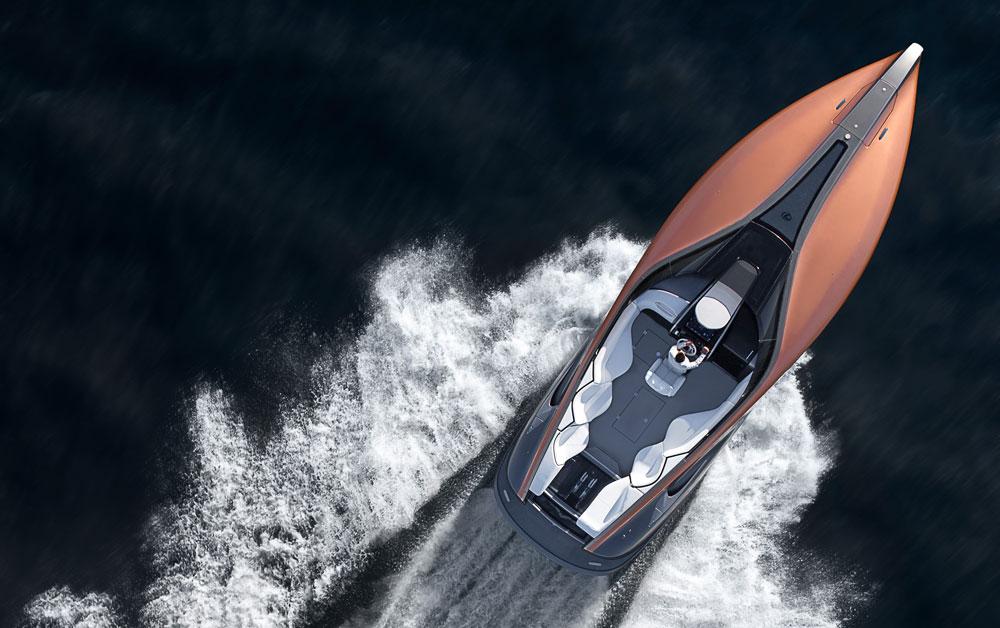
This led the Marine Department to envision how a premium performance yacht might expand the Lexus brand into new areas of lifestyle and recreation. Today Lexus reveals the result of this project, a running proof-of-concept for a Lexus Sport Yacht, at Di Lido Island on Biscayne Bay, Miami Beach FL.
Design
A brief for an open sport yacht for recreational day-touring with six to eight guests, powered by twin high-performance Lexus V8s and with advanced styling and handling was given to the Lexus Design Center in Toyota City, Japan. In the summer of 2015 concepts from the design team were evaluated by Senior Managing Officer Tokuo Fukuichi, Chief Officer of Global Design and President of Lexus International Co., Senior Managing Officer Shigeki Tomoyama in charge of the Toyota Marine Department, and President Toyoda.
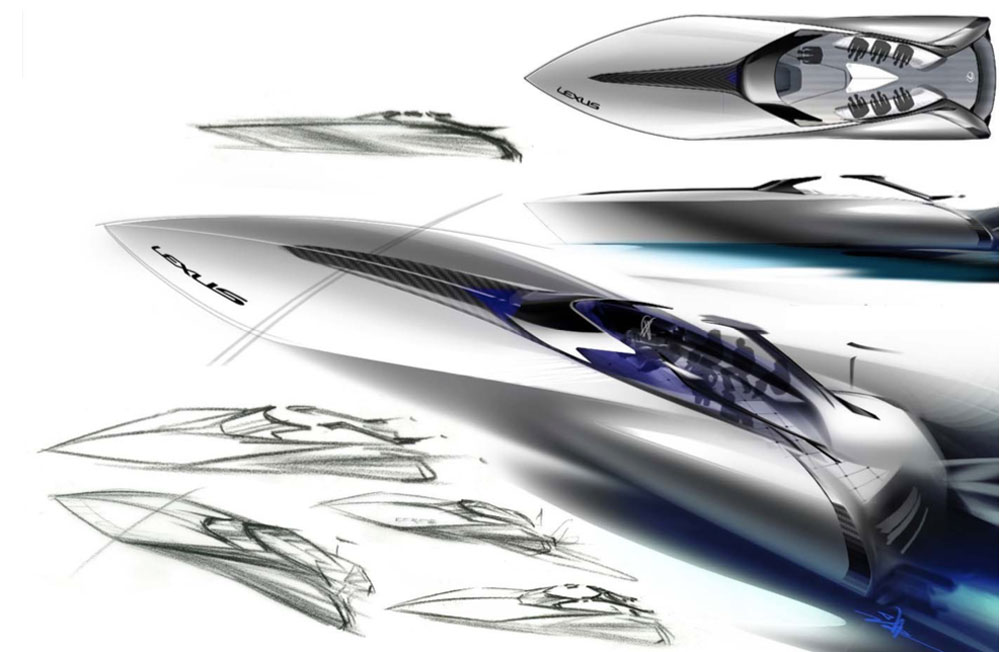
“This concept for a Lexus Sport Yacht allowed us to explore how Lexus design language could be applied to a maritime lifestyle,” said Yoshihiro Sawa, executive vice president of Lexus International. “For the Lexus Design Center this project has been very exciting. The effort is valuable to us as it stirs our creative energies and pushes our imagination to design and lifestyle possibilities outside of the automotive realm we know well.”
The selected proposal continued to be refined throughout 2015 as the Marine Department engineered the construction and onboard marine systems.
As a concept, the Lexus Sport Yacht revealed at Miami is a bespoke one-off project with no production intent.
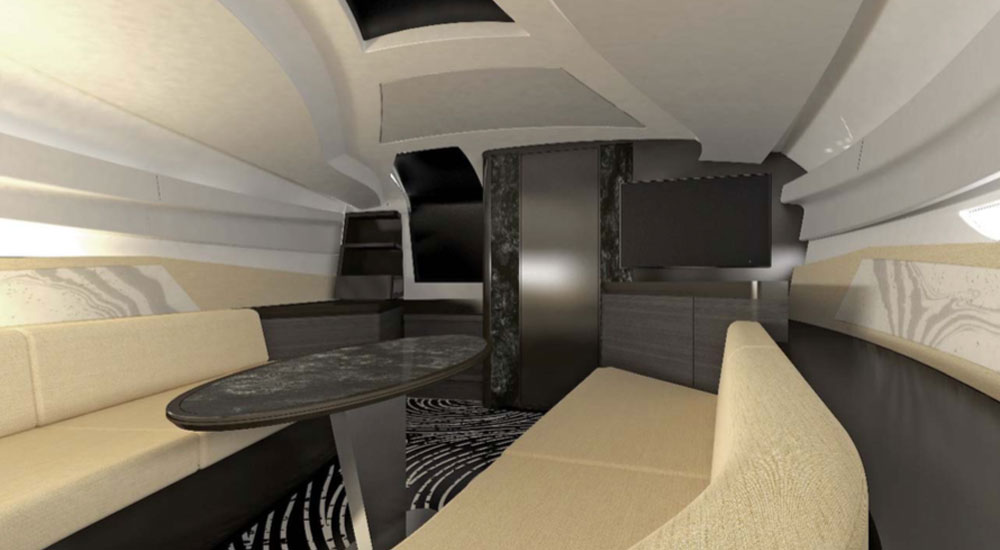
To produce this single example the Marine Department selected the Marquis-Carver Yacht Group of Pulaski, Wisconsin, USA, based on their in-house engineering and manufacturing capabilities and their skill in large hand- laid composite structures.
Features
The design of the Lexus Sport Yacht concept has the upper deck and outer hull seamlessly bonded around the inner structure, each piece a single massive hand-laid composite of two-part polyurethane epoxy resin reinforced with hand-laid woven carbon fiber cloth, a composite material called carbon-fiber reinforced plastic, or CFRP. CFRP is the technology used in the structure of racecars and supercars like the 202 mile per hour (325 kmh) 553 horsepower Lexus LFA, high-performance military and civilian aircraft, competition skis and bicycles, and world-class racing sailboats.
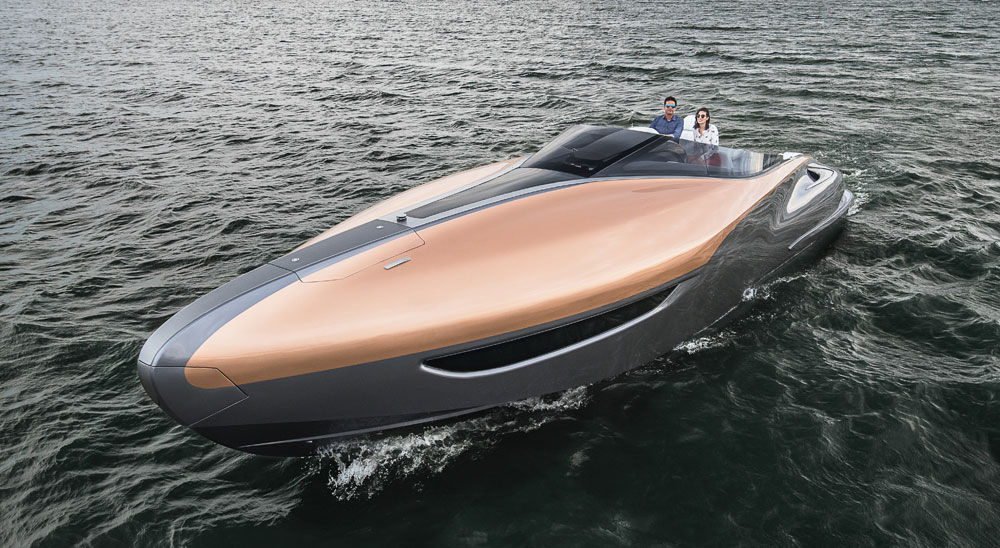
The Lexus Sport Yacht concept’s unique CFRP construction saves nearly 2,200 pounds (1,000 kg) compared to a similar yacht in fiberglass reinforced plastic (FRP). The underwater hull design is stepped to reduce resistance or drag and improve handling balance at high speeds.
The concept is powered by twin 5.0-liter V8 gasoline engines based on the 2UR-GSE high-performance engine of the Lexus RC F coupe, the GS F sport sedan and the new LC 500 grand tourer. Each engine produces 440 horsepower, driving the yacht at speeds up to 49 miles per hour (43 knots) through a pair of hydraulically controlled inboard/outboard stern-drives. A bow-thruster with joystick control aids in docking.
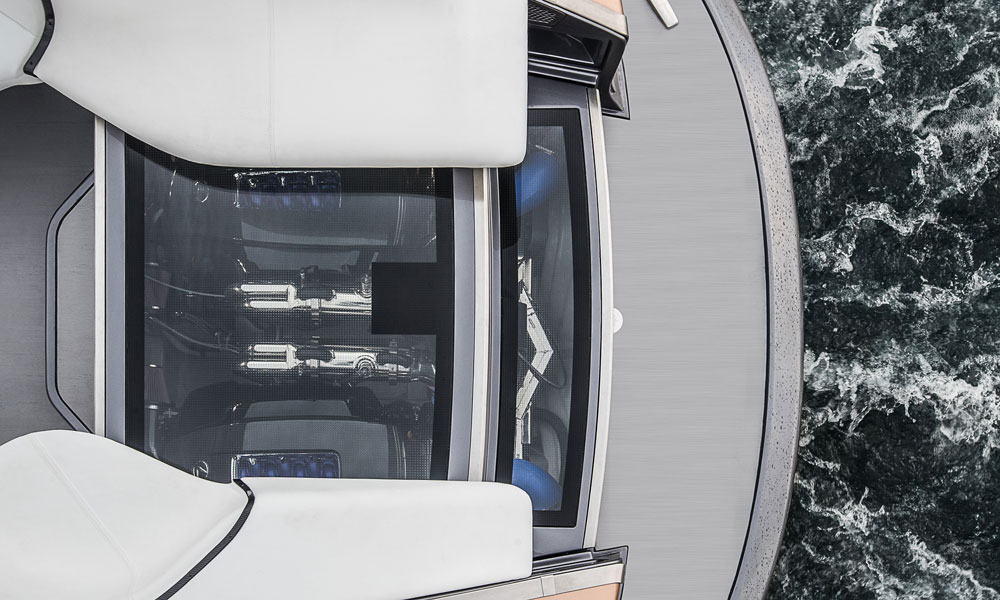
The captain controls and monitors onboard systems from a color touchscreen panel at the helm; screens show GPS navigation, digital charts, surface radar, underwater sonar, lighting and entertainment systems. The captain’s seat is power adjustable; the armrests fold out to become jump seats on each side for very special guests.

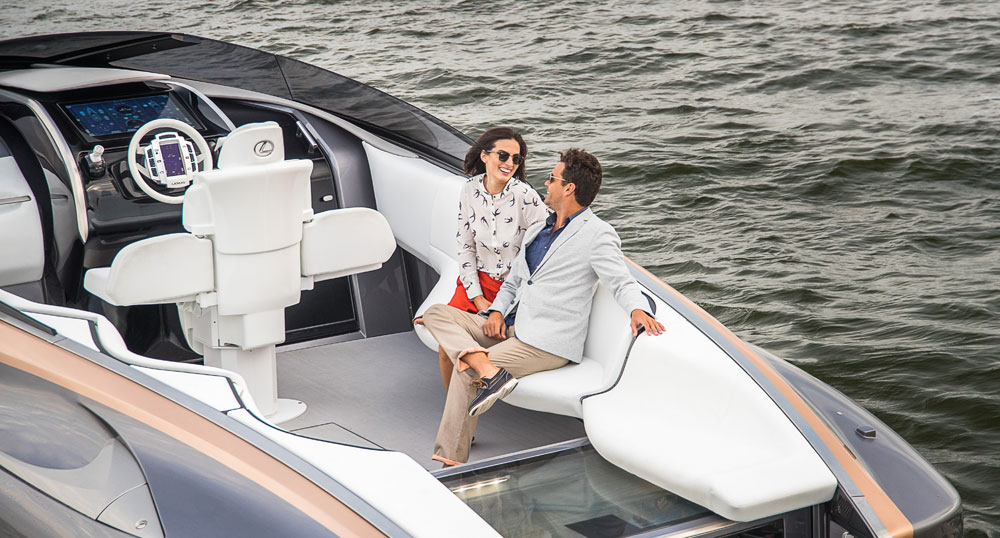
The forward passenger cabin is inviting in luxurious Lexus leather with wood and glass details. A standing height, sofa seating for six with a table, and air conditioning create a comfortable environment for intimate entertaining. The galley features a two-burner stove, sink and under-counter refrigerator; a beautifully finished head includes a shower.
An integrated audio-video entertainment system is fully networked, with 4G WiFi & WAN. Sound reproduction is by Revolution Acoustics surface-mounted drivers using the ceiling panel as a transducer, powered by a
Mark Levinson® Reference digital amplifier.
Photo Gallery
Specifications (Preliminary Values)
Overall Length: 42 ft / 12.7 m
Beam (width): 13 ft / 3.86 m
Payload: 8 people
Power, total: 885 hp (873 ps) / 660 kW
Top Speed: 49 mph / 43 knots
Background
Lexus, a division of Toyota Motor Corporation, was founded in 1989 to develop and produce the finest cars ever built with a commitment to providing the highest levels of customer service
Lexus International was dedicated as a company-within-the-company in 2011 to coordinate all central strategy, planning, design, engineering and production for the brand.
The Marine Business Department of Toyota Motor Corporation (TMC) was founded in 1997 to develop premium yachts using advanced technology and quality control methods perfected in making Lexus luxury cars.
Toyota Marine’s Ponam line has included fiberglass sport-fishing boats in 26- and 28-foot lengths, and luxury cabin- cruisers in 31-, 35-, 37- and 45-foot lengths with durable and quiet hulls of fully-welded A5083 aluminum alloy.
Ponam models are powered by high-efficiency turbodiesel engines based on those of Lexus GX 300d (3.0-liter turbodiesel 4 cylinder) and LX 450d (twin-turbo diesel 4.5-liter V8) luxury utility vehicles. The Toyota Ponam line is the market-leader in the premium yacht industry in Japan.
From 1998 to 2002, Toyota Marine also developed and produced the Epic line of fiberglass tournament ski boats and wakeboard boats, primarily for the US market, all powered by the 4.0-liter 1UZ-FE DOHC gasoline V8 from the Lexus LS 400 luxury sedan.
Marquis Yachts, LLC, is an independent privately-owned company in Pulaski, Wisconsin, that designs, engineers and manufactures the brands of Marquis Yachts and Carver Yachts. The pinnacle of the Marquis line is a 73 foot, three-level, luxury yacht with fiberglass reinforced plastic (FRP) hull, deck and superstructure. For more information go to www.marquisyachts.com or www.carveryachts.com.
Mark Levinson, the premiere audio division of Harman International, has meticulously crafted high-end Reference Audio source components, amplifiers and loudspeakers dedicated to audio purity in home systems since 1972. Mark Levinson engineers, designs, tunes and supplies premium high-performance, high-efficiency surround audio systems specific to each Lexus model. www.MarkLevinson.com

